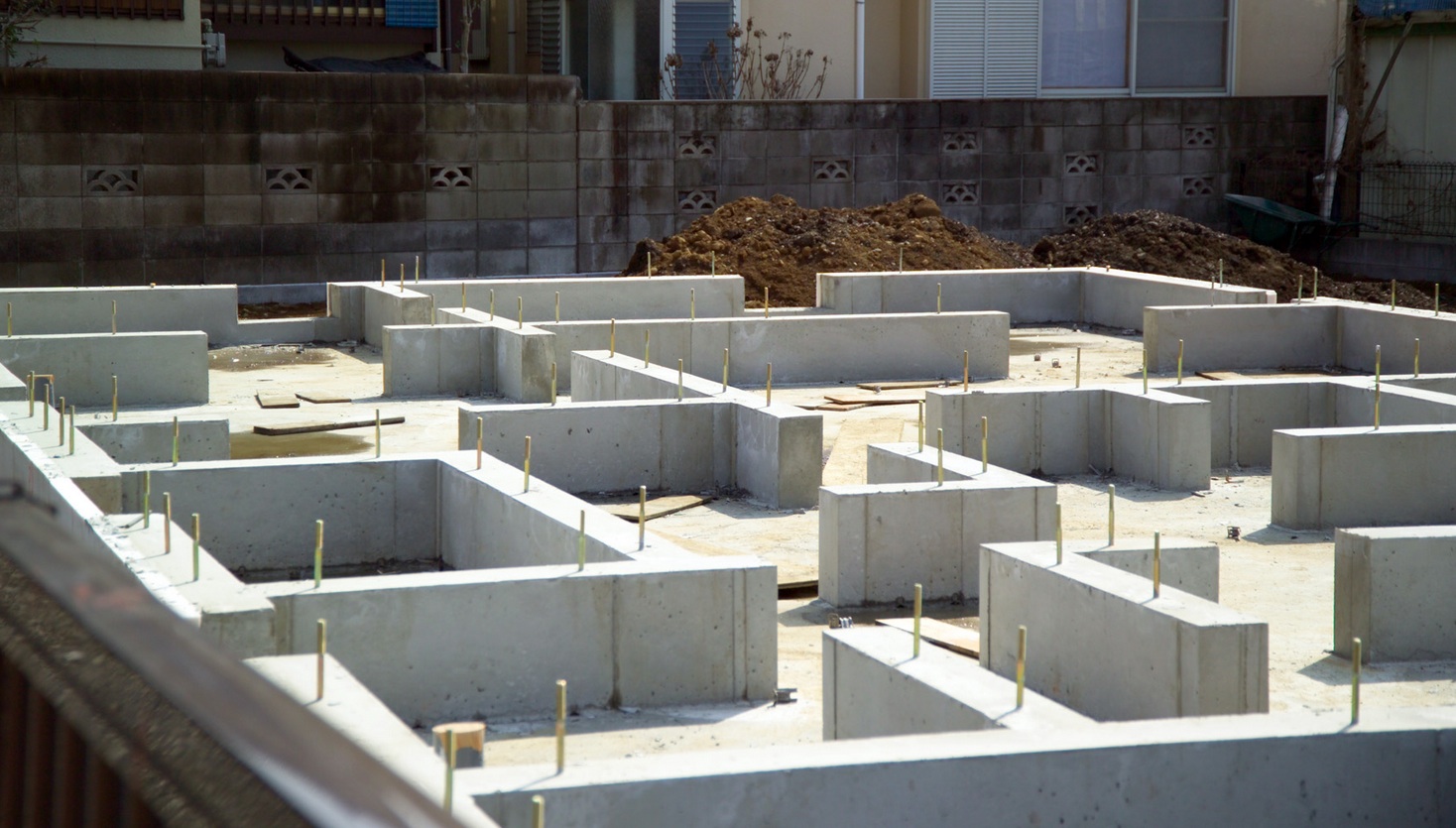Table Of Content
- Plumb and Level Foundation Walls
- What Is a Slab Foundation?
- D. More Details on Foundation Types
- Common Terms of Construction English #BaatGharKi
- How to Build a House Foundation: 7 Steps to get a Solid Foundation
- A Comprehensive Guide to House Foundation Types: Choosing the Right Base for Your Home
- Plan the size of your rooms in the correct manner

Admittedly, stone foundations aren’t nearly as popular as they once were. Until the widespread use of concrete, however, folks would pull field stones from the ground around their property and pile them up to form walls. They may have been dry-stacked (with no mortar) or mortared in place. They can be used for workshops, entertainment spaces, storage or even wine cellars. They’re generally easy to condition, as the masonry surfaces will stay cool in the summer and retain heat in the winter (once heated). And since their footings are dug so deeply, full basements are very strong and stable.
Plumb and Level Foundation Walls
The best type for your project depends on climate, soil type, budget, and structural needs. Begin pouring the concrete inside the foundation walls’ perimeter. The wall forms should match the thickness and height specified in your plans.
What Is a Slab Foundation?
Attach string or twine to the corner stakes (or batter boards, if using them) and run it along the outer edges where the foundation footings will be. Add temporary bracing to the stakes to keep the layout secure during excavation. The overview of how to build a foundation for a house is similar to what is necessary to build a foundation for other structures, such as a detached garage. Foundation repair costs typically range from $2,160 to $7,790, but homeowners will pay around $5,000 on average. Ultimately, the right foundation type for you is the one that complements your lifestyle, home design, and local environment.
D. More Details on Foundation Types
Tennessee tornado survey shows homes held to foundation by nails, tape - Tennessean
Tennessee tornado survey shows homes held to foundation by nails, tape.
Posted: Fri, 15 Dec 2023 08:00:00 GMT [source]
If it’s likely to be a “forever home,” the expense of a full basement may be worth it. However, if it’s an inexpensive home that the homeowner plans to live in and then rent or sell in a few years, a slab variation or crawl space may be best. Mark the precise locations where you’ll place the footings at regular intervals along the string lines.
Common Terms of Construction English #BaatGharKi
Concrete panels are best for multifamily units and are cost-effective for residential homes with repetitive designs. However, if budget is a concern, we would not recommend concrete panels for custom homes. Pier and beam foundations have specific construction and maintenance requirements but offer several advantages. Crawl spaces are ideal for warmer climates and areas more likely to experience earthquakes. Wood foundations are less durable, more susceptible to water damage and do not last as long as masonry foundations.
After completing 2 block courses, use a level to confirm a horizontal level foundation wall. Continue this process and stack the blocks to the full height of the foundation. Properly installed footings of a foundation will ensure a home’s strength and durability. The ICF footings distribute all the loads from the house to the ground. There are five main foundation types and a handful of important variations. Dampness in walls can cause serious structural damage & increase health risks.
A Comprehensive Guide to House Foundation Types: Choosing the Right Base for Your Home
Though foundations are often cement or wood, there are variations. Very few jurisdictions will approve a traditional stone foundation these days. Also, since stones are naturally irregular, gaps and holes may exist where rodents and pests can enter the basement. Despite the thermal mass of large boulders, these foundations tend to insulate poorly.
Choose an appropriate termiticide based on soil type and the presence of groundwater in the process of building foundations. Strictly follow all product instructions and safety precautions when applying the treatment. In the process of building foundations, once you have finalised the site, mark out the house foundation layout accurately using string lines, pegs and spray paint. Then, excavate the foundation trenches and footings as per the dimensions and depth specified in the plan.
Browse Plans
ICFs are easy to install, and they’re actually stronger than traditional poured concrete walls. Also, they’re excellent insulators, retaining heat in the winter and keeping cool in the summer. The foam also can act as a vapor barrier, preventing moisture from penetrating the masonry walls. The excavation and formwork required are extensive, meaning increased labor costs. Additionally, these basements required the most concrete, driving up materials costs.
Plus, you then have to take steps to prevent future termite damage once you've addressed the initial damage. But in reality, the cost of fixing outdated electrical work may be much higher. In addition to these costs, you might have to pay to fix the walls you inevitably have to break up to access your wiring in the first place.
But these buried features are arguably the most important aspects of the home as they carry the entire weight of the building. And, just as there are different types of homes, there are many types of foundations to build upon. A footing is a structural component found at the base of a building. Its primary purpose is to support the building’s foundation and distribute its weight evenly across the soil. Types of footings include shallow footings, pad footings, strip footings, raft footings, and pile footings.
Installing a French Drain Along Your Foundation (2024) - Architectural Digest
Installing a French Drain Along Your Foundation ( .
Posted: Mon, 05 Feb 2024 08:00:00 GMT [source]
Pier and beam foundations are more common in commercial and industrial applications. However, for larger residential homes, many builders will use drilled shaft concrete piers and beams. Many people consider a partial basement to be a crawl space since you can store some items there but can’t convert it into a living space.
However, unlike crawl spaces, these foundations don’t have masonry perimeter walls. Instead, they have deeply-dug footings at load-bearing points under the house. There are generally heavy-duty timbers that extend from the footings to the home, and this design helps keep the home dry and safe in coastal areas where flooding is common.

No comments:
Post a Comment